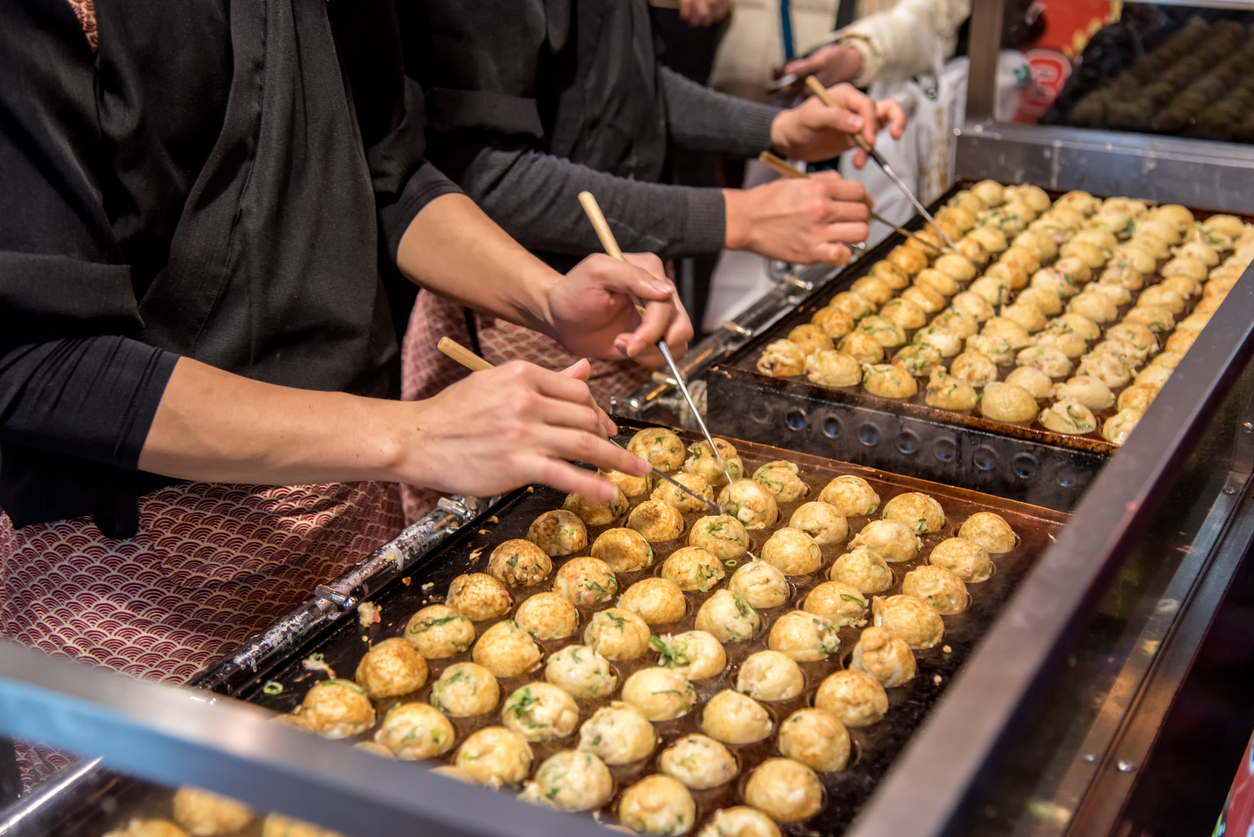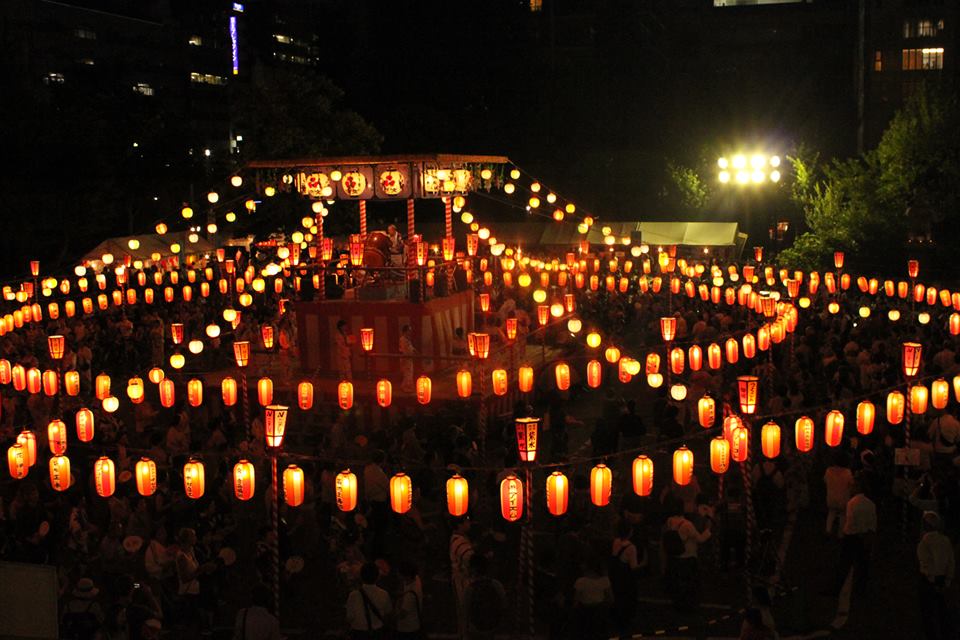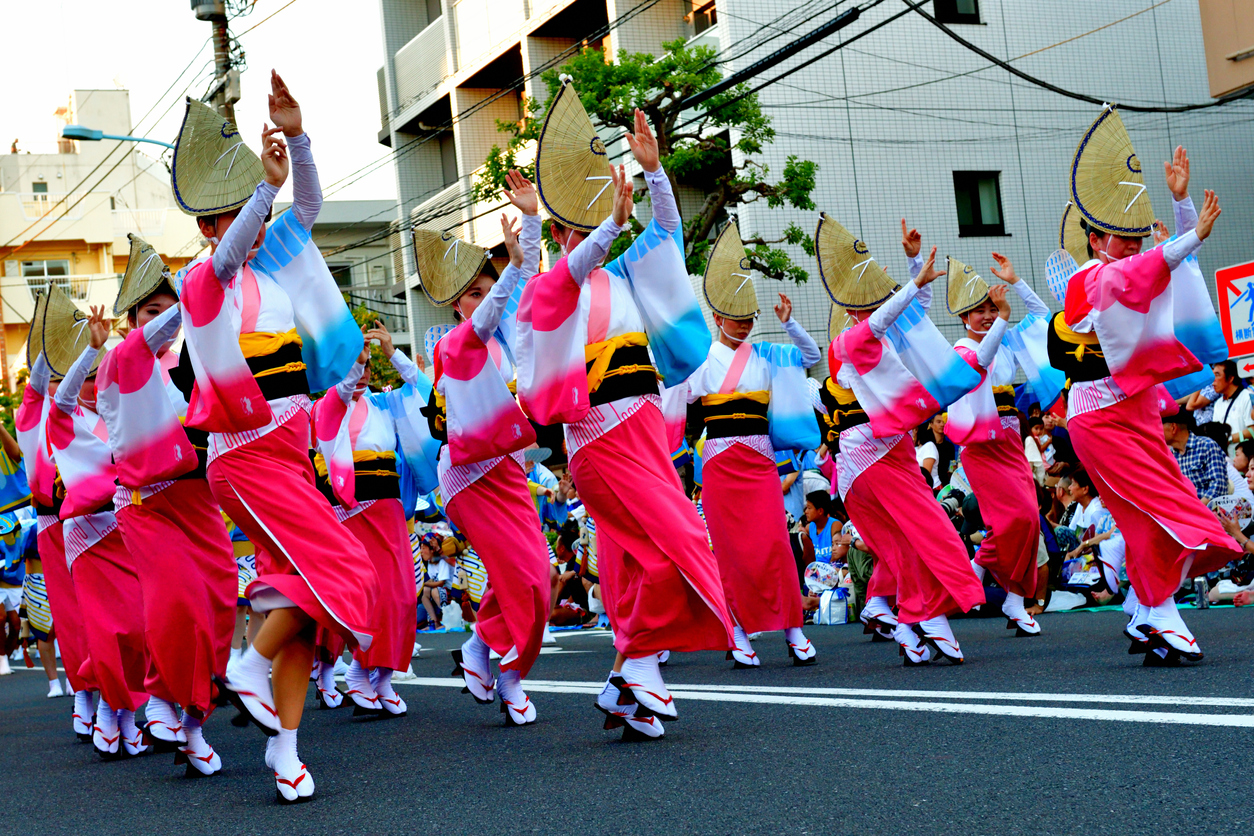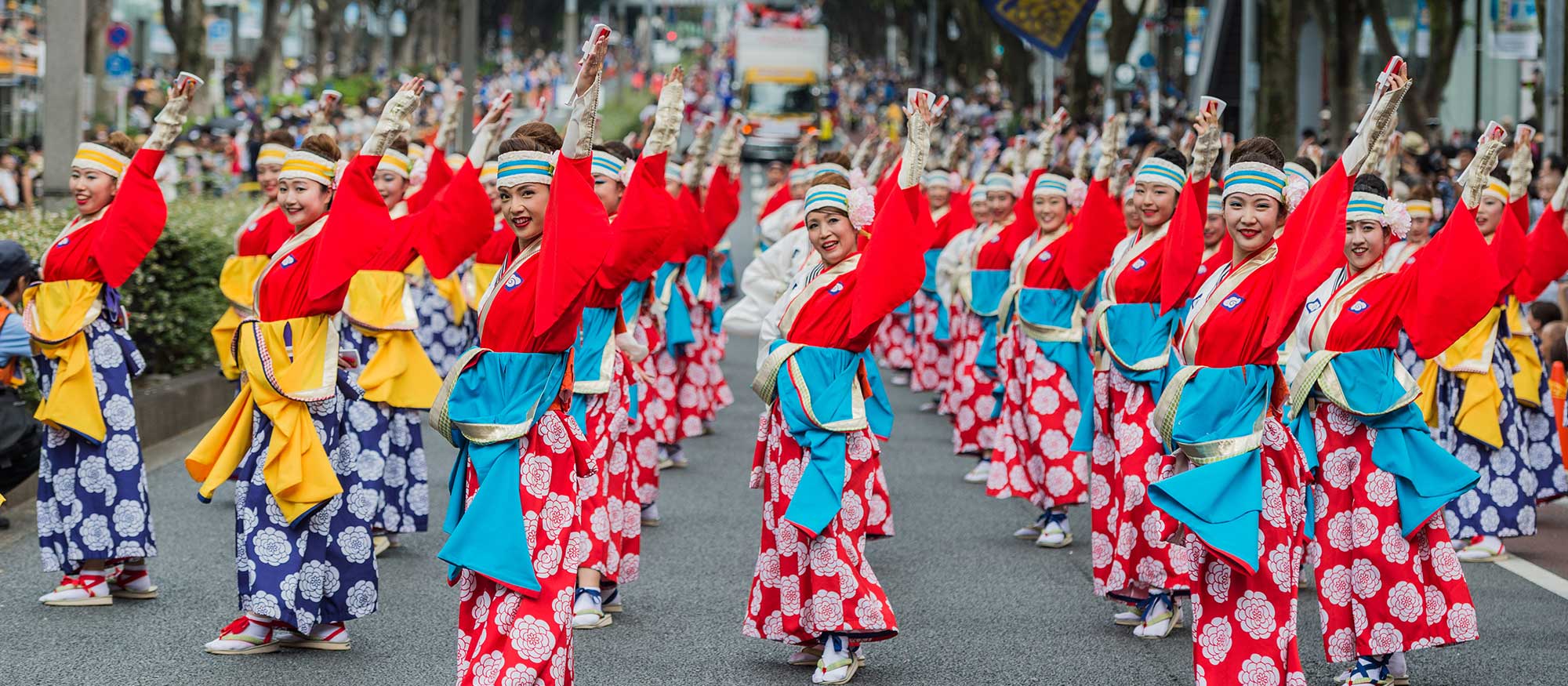7 Unique Japanese Summer Festivals 2019: Tokyo Edition
It’s time to dust off your yukata and head to summer matsuris in Tokyo!
Summer is in the air—the Tokyo air to be specific—and so is the smell of street food from yatai stalls. You can almost hear the distant sound of fireworks and the men and women shouting in unison as they carry mikoshi, portable shrines, down the street.
Summer is a precious time of the year in Japan when families, friends, and couples come together and go to summer festivals. People love to dress in yukata, play festival games, and eat delicious street food. Here are some festivals in Tokyo, both traditional and modern, that you won’t want to miss this summer!
Summer Matsuris in Tokyo

Matsuris (祭り) in Japan are local festivals that take place at temples and shrines. Often times, there is a procession of mikoshi (portable shrines) which are paraded around the neighborhood then returned to the main temple or shrine.
There are always countless stalls of street food, with enthusiastic chefs preparing steaming plates of yakisoba (stir-fried noodles), okonomiyaki (savory pancake), takoyaki (pancake ball filled with octopus pieces), and more that can be enjoyed on-the-go. Sweets and snacks include watakashi (cotton candy), taiyaki (fish-shaped pastries with a sweet, red-bean filling), and dango (pounded rice balls with a sweet soy-sauce syrup). Wash it all down with a ice-cold beer or ramune (soda) drink!
Favorite matsuri games include kingyo sukui (金魚すきi) where you can fish for goldfish using a small paper net, or try to scoop a water balloon floating in a pool. Be sure to bring several ¥100 coins with you so you can join in on the fun!
1. Tsukiji Hongwanji Bon Odori Festival

This massive, four-day Bon Odori Festival takes place at the Tsukiji Hongwanji Shrine, conveniently located next to the famous Tsukiji Market. Obon (お盆), or Bon, is a traditional Japanese festival that honors ancestral spirits. During Obon, locals often have family reunions and make a visit to the cemetery to pay their respects. Although many shrines have Obon festivities, the one at Tsukiji Hongwanji Shrine is one of the most impressive in Tokyo.
An enormous stage is set up on the grounds of the shrine, which is encircled in lanterns and dancing people. Performances on the stage include taiko drummers, and visitors are encouraged to form a circle around them to enjoy the show.
There are many yatai (屋台) street food stands around the shrine, and the food market stalls at the Tsukiji Outer Market stay open for the festivities, too!
When: Wed, July 31 to Sat, August 3
Time: 7 p.m. – 9 p.m.
Where: Tsukiji Hongwanji Temple, 3-15-1 Tsukiji, Chuo-ku
Access: Tsukiji Station on the Hibiya subway line or Tsukijishijo Station on the Oedo subway line
2. Hachioji Festival
The Hachioji festival is a traditional Japanese summer festival, complete with a procession of mikoshi being carried enthusiastically through the streets. Expect performances from traditional taiko drummers and geisha, and a grand assortment of street food stalls to choose from.
One Hachioji Festival tradition is called buttsuke (ブッツケ) where the floats purposefully collide with one another to try to knock the other off its groove. This festival gained extra fame in 2016 when over 2,000 dancers won a Guinness World Record for the largest Bon Dance, which lasted a whole five minutes!
When: Fri, August 2 to Sun, August 4
Time: 6:30 p.m. – 9 p.m.
Where: Hachioji Station Crossing, 5-1 Hachioji
Access: Hachioji Station on the Chuo, Hachiko, and Yokohama lines, or Keio-Hachioji Station on the Keio line
3. Fukagawa Hachiman Festival
View this post on Instagram
The Fukagawa Hachiman Festival is known as one of the three major matsuris of Edo, together with the Kanda and Sanno matsuris. Similar to the other two matsuris, the mikoshi portable shrines are carried parade-style between the on-looking spectators. During this festival, people splash water on the mikoshi being carried to purify it. This led to the festival’s nickname becoming mizukake matsuri (水かけ祭り), or the water-splashing festival.
The water-splashing occurs only on Sunday, August 11. Be prepared to get wet if you’re standing by the Eitai Bridge and be careful of your electronics. After the mikoshi cross this bridge, it’s fair game for the water-purifying to begin.
When: Sat, August 10 to Wed, August 14
Time: 7:30 a.m. – 3:30 p.m.
Where: Tomioka Hachiman Shrine (Fukagawa Shrine), 1-20-3 Tomioka, Koto-ku
Access: Monzennakacho Station on the Oedo and Tozai lines, and Kiba Station on the Tozai Line
4. Asakusa Samba Carnival
Tokyo is filled with energetic and dazzling summer festivals, and the Asakusa Samba Carnival is no exception. Japan historically has close ties with Brazil, the country with the largest Japanese population outside of Japan. The Carnival consists of a parade with many dazzling floats and accompanying dancers, and each group is competing for the award for the best float.
The dancers wear traditional Carnival outfits: large feathered headdresses and bright, colorful, revealing costumes. Dancers may also fashion other exotic attire, such as large ball gowns. Some even dress up as characters to accompany the design or theme of their float.
Many people arrive early to the Carnival to get a seat up close to the parade. Be prepared to dance along to the beat!
When: Saturday, August 31
Time: 2 p.m. – 6 p.m.
Where: Kaminarimon Dori, 1-20 Asakusa, Taito-ku
Access: Asakusa Station on the Ginza, Asakusa, and Tobu Skytree subway lines, Tawaramachi Station on the Ginza subway line.
5. Azabujuban Noryo Festival
View this post on Instagram
The Azabujuban Noryo Festival is a popular Tokyo festival that showcases local Azabujuban-area stores, and their cooking and handiwork.
Every year for 40 years, local shops owners in the Azabujuban commercial area have organized this festival. Only shop owners in this local area are allowed to set up stalls along Zoshiki-dori, the main shopping street running through the Azabujuban neighborhood. Because Azabujuban is an international community, you can expect to find street food from many different countries around the world.
There is a stage set up during the festival, where visitors can listen to local artists perform, including traditional Japanese musical performances.
When: Sat, August 24 to Sun, August 25
Time: 3 p.m. – 9 p.m.
Where: Zoshiki-dori, 1-4-6 Azabujuban, Minato-ku
Access: Azabujuban Station on the Namboku and Oedo subway lines
6. Koenji Awa Odori Festival

The Koenji Awa Odori Festival was originally started in 1957 to invigorate the small shopping street in the Koenji neighborhood. Since then, with the completion of the nearby Koenji station and the expansion of the commercial area, the festival now attracts a million visitors each year and features 10,000 dancers.
The Awa Odori originated from Tokushima island in southern Japan, some 400 years ago. One of the most famous dances of this matsuri is the “ladies dance” where dancers wear high geta (下駄) sandals and large woven hats. The procession of dancers is lively and enthusiastic, with instruments used such as taiko (太鼓) drums, flutes, and chimes.
The Koenji Awa Odori group members have been invited to perform internationally, including Hong Kong, Korea, and Taiwan.
When: Sat, August 24 to Sun, August 25
Time: 5 p.m. – 8 p.m.
Where: ‘8’-shaped route between JR Koenji Station and Shin Koenji Metro Station, Koenji
Access: Koenji Station on the Chuo and Chuo-Sobu JR lines, and the Shin-Koenji Station on the Marunouchi line.
7. Harajuku Omotesando Genki Matsuri Super Yosakoi Festival

This festival, also known as just the Harajuku Super Yosakoi Festival, is one of the largest traditional dance festivals in Tokyo. Yosakoi Festivals originated in Kochi prefecture in southern Japan. Festival organizers wanted to use dance to revitalize the city that had taken a hit during World War II. The dances are loud and energetic, and each dancer holds a naruko (鳴子), a wooden clapping instrument.
Yosakoi performances use many elements of traditional Japanese dance, but with greater freedom of expression come more exciting and flamboyant moves. The most impressive shows are by large dance groups executing well-coordinated dances. Often there are chants and cheers that accompany the choreography too.
At the Harajuku Omotesando Festival over 5,000 dancers, part of 100 dance teams, are expected to take part in the parade on Omotesando Street. There will also be a special stage near the Meiji Jingu for performances.
When: Sat, August 24 to Sun, August 25
Time: 10 a.m. – 8 p.m. (ends at 5:30 p.m. on August 25)
Where: Omotesando Dori, Yoyogi Park, Harajuku, Shibuya-ku
Access: Harajuku Station on the JR Yamanote line












Leave a Reply